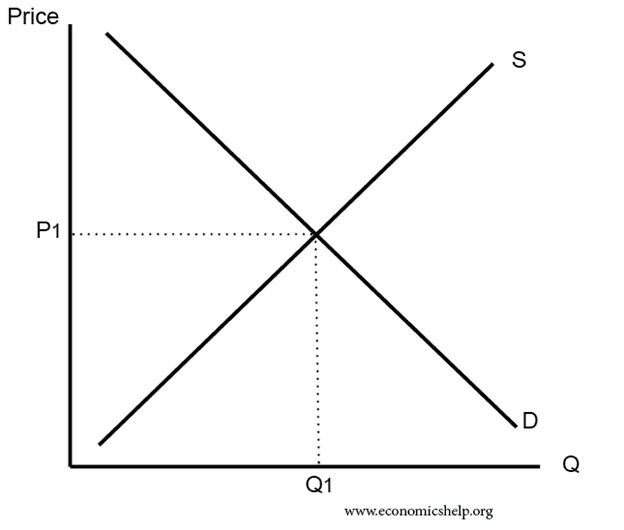Every day that stock market exchanges are open thousands of stocks trade at prices that can vary significantly from hour to hour, day to day and week to week. But what sets a stock price is no more complicated than supply and demand.
The constant price moves can be frustrating for stock investors to understand, particularly if you are just starting out. This can happen for stocks at all market capitalization levels. The supply and demand chart below illustrate the supply and demand curve:

The concepts of the supply and demand curve on this supply and demand chart are straight forward to understand.
Higher demand leads to higher prices and lower demand leads to lower prices.
Lower supply leads to higher prices and higher supply leads to lower prices.
These concepts are true for all commodities, including stocks.
It is when supply and demand curves intersect that a market is made and fair value market prices are created. That fair value is the stock price that you see quoted each day.
But the information that is scrutinized the most is related to earnings and cash flow since it is such a critical indicator of the financial health of a company and what sets a stock price.
Companies that generate higher earnings and cash flow will be valued higher by investors.
Companies that generate lower (or negative) earnings and cash flow will be valued lower by investors.
Investors are looking for marco economic trends that may indicate business is slowing down, which would be bad for stocks and send prices down. Or see things improving which would be good for business and cause stock prices to increase
As a result of this analysis they will build models that forecast the future performance of the company.
Stock volatility occurs when the financial performance of the company is significantly different then the expected performance modeled by the analysts.
A company that exceeds the expected financial performance will likely see an increase in their stock prices.
A company that falls short of expected financial performance will likely see a decrease in their stock price.
This is of course counter intuitive. If the price of stocks go lower you would think more people would be motivated to buy the stock.
But we are all human and let emotions get in the way. When the market starts to lose ground, people will get nervous. Thinking that the stocks will continue to go down has them sell stocks.
And when the stock market is euphoric, and people have FOMO (the fear of missing out) it sometimes creates a demand for a stock at a time when people should be selling.
So be aware of your emotions with investing and try to limit the impact it has on your investing decisions.
The best advice on how to handle day to day stock price movements is to try and ignore it. Stock prices are going to vary. It is just the way the markets work.
You will be better off: